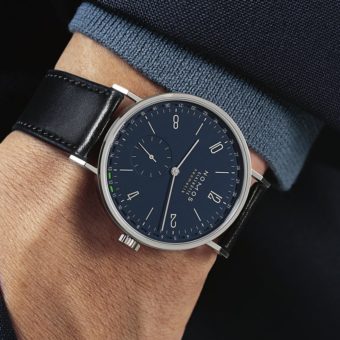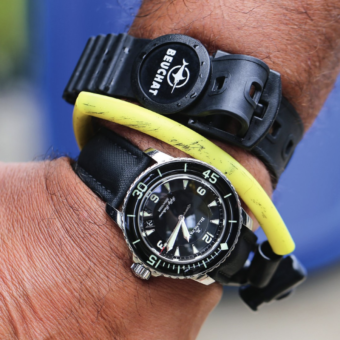Since Montblanc’s 1858 collection was first released in 2015, it has served as the host for watches inspired by the erstwhile Minerva marque. Montblanc acquired the Minerva manufacture in 2006 and has done well to use this company’s long design history to enhance its own novel series. This year was no different, with Montblanc expanding its 1858 collection with a time-only watch, a GMT, a limited-edition monopusher chronograph, a limited edition pocket watch, and our focus for this week, the 1858 Automatic Chronograph.
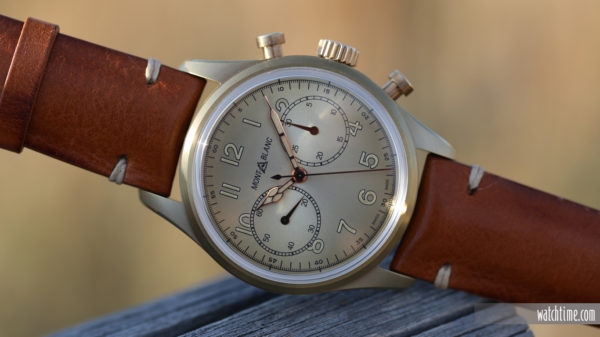
Montblanc has emphasized it draws its primary inspiration from a 1930s Minerva chronograph example, but where the modern watch channels a common WWII-era chronograph design with pump pushers, a straightforward case, and dial configuration, the vintage watch was itself a monopusher. The reason for this style change in the modern piece was made for a specific reason: the brand values the design of the original Minerva and believes watches inspired by it will have a market appeal, yet due to the modern rarity of production, monopusher chronographs are difficult to bring to consumers due to the high cost of manufacturing which is passed into the overall price of the watch. As such, Montblanc has released each of its monopusher designs in 100-piece limited editions and has framed the new bi-compax to be a period-inspired — albeit not exactly historically accurate — pilot’s chronograph.
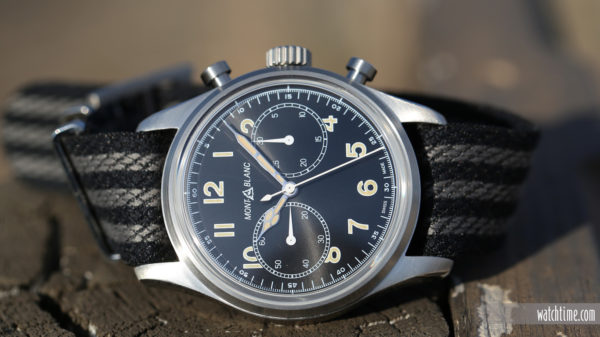
The 1858 Automatic Chronograph comes in two options, both using the same military style 42-mm case with pump pushers, a thick crown, and an engraved case back featuring the Montblanc logo over the image of a mountain. The first of the two is a more vintage-influenced steel watch with a black dial while the second is a more contemporary bronze cased piece with a champagne face; both models use similar cream-colored accents (although it might be more appropriate to refer to them as faux patina on the steel watch). On the dial of each there’s an outer minute ring contrasting to its background, white for the steel version and black for the bronze, while slightly closer to the center are SuperLumiNova coated Arabic numerals and two prominent subdials at the 9 and 3 o’clock positions for running seconds and a 30-minute counter, respectively.
The time is indicated by a set of antique-style cathedral hands common in the earlier half of the twentieth century, while the chronograph seconds counter uses a simple pointer with a small counterweight on its opposite end. To keep its hands ticking, the 1858 Automatic Chronograph features the caliber MB 25.11 based on the Sellita SW-500 and is capable of a 48-hour power reserve. As with all of the brand’s watches, it must successfully pass the Montblanc Laboratory Test 500, where the brand has each watch run for 500 continuous hours to certify its accuracy before appearing worldwide for sale. Once it lands in watch boutiques, the steel model will be priced around $4,900, with the bronze model to retail around $5,800.
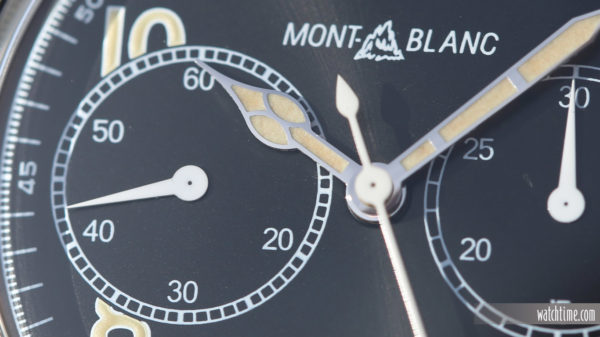
As the new watch design is only casually influenced by the 1930s Minerva monopusher, rather than strongly informed by it, the differences between the vintage and modern references are both expected and apparent. Excluding the obvious fact the contemporary piece is a not a monopusher, the vintage model featured a typical pilots’ watch jewel-style crown, a larger and curvier case unique for military watches of the era, and had bolder numerals for its outer minute ring; where the modern watch uses a simpler, more rugged crown, a utilitarian-style case common to other military chronograph from the vintage era, and proportionally larger sub-dials on its face than those on the vintage edition.
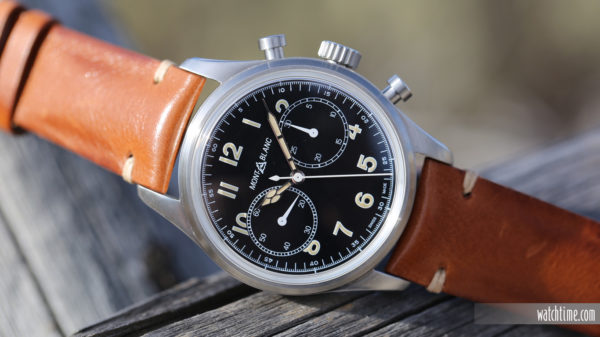
Yet despite the differences in the watches, there are some fairly obvious vintage-inspired characteristics on the contemporary piece. In both the bronze and steel variations, the dial configuration with its minute rings, large sub-dials, Arabic numerals hour markers, and cathedral hands matches the historic Minerva model. It is apparent the “heritage” model is the steel variant, with its black dial and cream accents, the watch has an identifiable vintage-appeal, and matches the aesthetic of the original chronograph. Although I will admit, if I encountered the watch without being aware of it beforehand, I would have likely thought it was a well-executed, slightly enlarged, and modernized reissue of a handsome WWII chronograph, instead of drawing the connection to the 1930s Minerva. This is not the worst problem to have, but it speaks volumes to the actual vintage aesthetic of the contemporary piece.
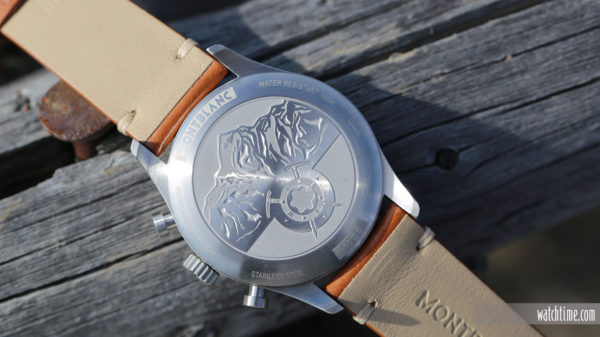
What I have found most interesting when reading about this new watch is in what other horological pundits have discussed about it the most. As it seems to be that its most distinguishing trait is not its own design successes or failures, but rather its relative accessibility compared to the significantly more expensive limited edition monopushers produced by the brand. Yet, as I view the two styles of watches — both of which claim a lineage and inspiration from the original 1930s Minerva proto B-Uhr pilots’ chronograph — I would argue confidently the 1858 Automatic Chronograph isn’t exactly the “look without the price” kind of watch it’s made out to be. The vintage monopusher design school in itself is so unique that it’s a bit difficult to imagine consumers will view the new pump pusher watch as a cost-saving method to the monopusher design it does not itself use. Regardless, the Automatic Chronograph is by no means a negative addition to the 1858 collection, and might well be a precursor for how Montblanc plans to channel the history of Minerva watches through its new series in the years to come.
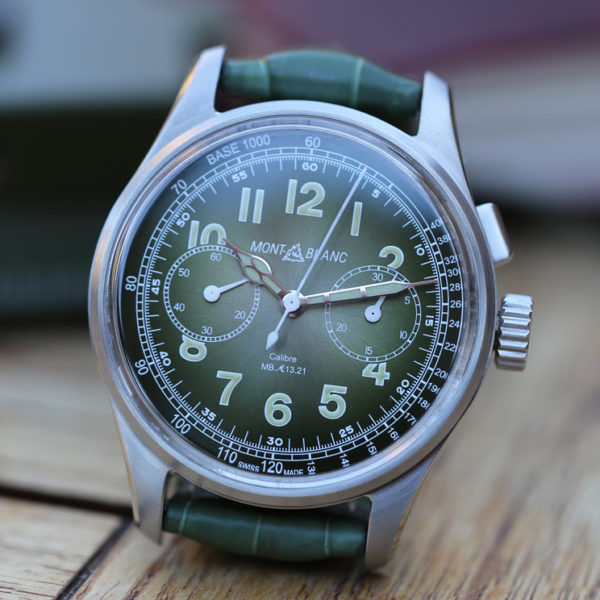
You can check out more details on the rest of Montblanc’s 2018 collection here, here, and here.
For the most recent article in the “Vintage Eye” series, in which we compare the Hamilton Khaki Field Mechanical 38 mm to its historical predecessor, click here.
Caleb Anderson is a freelance writer with a primary focus on vintage watches. Since first learning about horology, he has garnered extensive knowledge in the field and spends much of his time sharing his opinions among other writers, collectors, and dealers. Currently located near New York City, he is a persistent student in all things historical, a writer on many topics, and a casual runner.

